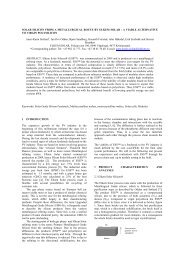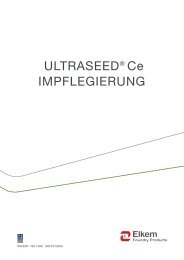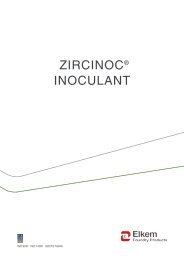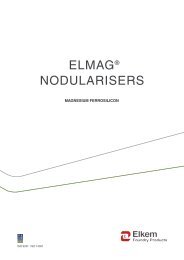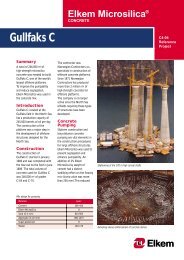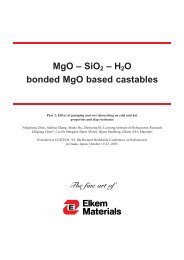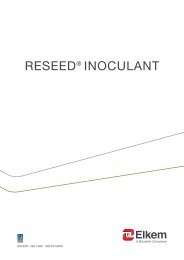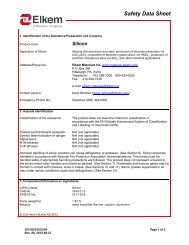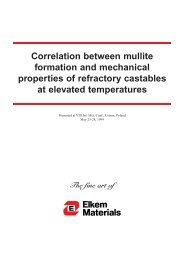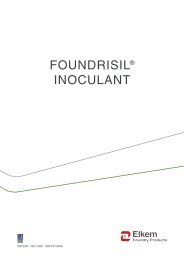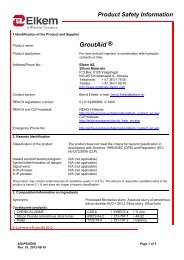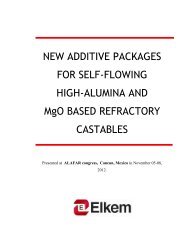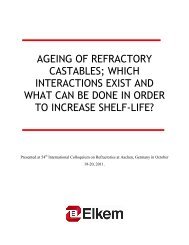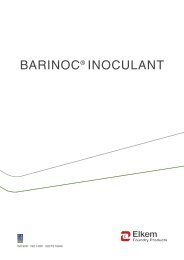Create successful ePaper yourself
Turn your PDF publications into a flip-book with our unique Google optimized e-Paper software.
Figure 2: Hot modulus of rupture as a<br />
function of time at 1400 and 1500°C for a<br />
fused alumina based castable with 0.5wt%<br />
hydraulic alumina in combination with<br />
0.5wt% cement. 8wt% microsilica.<br />
At 1400°C, the strengthening (which is caused by the mullite formation) continues for<br />
perhaps more than a day, while at 1500°C the reaction is completed within a few hours at<br />
temperature. At 1300°C, unpublished data have indicated that the strengthening by the<br />
mullitization occurs at a very low speed.<br />
Once the mullite bond is established, it is permanent. This means that if e.g. a castable like<br />
that in Figure 2 is prefired for 5 hours at 1500°C and then tested at 1400°C, then the hot-<br />
M.O.R. will be higher than for a sample which has been held at 1400°C for 5 hours. Around<br />
25-30MPa would probably be obtained in such a test.<br />
This example was for a castable with only minute amounts of cement (i.e. CaO) so that we<br />
may correlate the strengthening with the predictions from the phase diagram, Figure 1, where<br />
a liquid forms and mullite crystallizes from this liquid.<br />
Castables normally contain several percent of cement to give green-strength. A certain<br />
amount of calcia is thus introduced. Since this lime is localized in the bond phase, which<br />
normally makes up around one third of a castable, the lime concentration becomes quite<br />
significant and has to be accounted for.<br />
The ternary phase diagram Al2O3 – SiO2 – CaO incorporates the cement:<br />
It is generally accepted that cement in combination with microsilica and alumina gives lower<br />
hot-strength with increased cement content. If you ask why this is so, the explanation is<br />
normally some vague reference to “low melting liquids in the system”, which is an<br />
explanation that may be good enough for some people, but has never satisfied me. During<br />
many years of research in refractory castables, the following conviction has gradually<br />
manifested:<br />
Basis for all the explanations should be the phase diagram. Particularly for castables based on<br />
relatively pure ingredients of silica, alumina and lime, it should be able to explain many<br />
observations by interpretation of the phase diagram Al2O3 – SiO2 – CaO. One should however<br />
always remember that the phase diagram supposes equilibrium, - which is normally not the<br />
case in your castable.<br />
<strong>Elkem</strong> Materials – page 3



